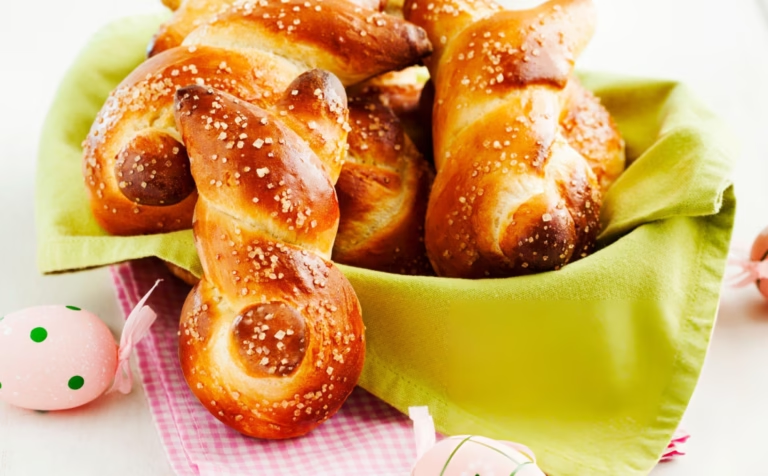If you’re looking for a nutritious, gluten-free, and protein-packed breakfast, Mixed Dal Dosa is a must-try! Unlike traditional dosa, this version combines multiple lentils for a richer flavor, crispier texture, and higher nutritional value.
Why This Mixed Dal Dosa Recipe Stands Out
Healthier Than Regular Dosa
High-protein (great for vegetarians & vegans)
Rich in fiber (aids digestion)
No fermentation needed (quick & easy)
Gluten-free & dairy-free (allergy-friendly)
Perfect Texture & Taste
Crispy edges with a soft center
Nutty, earthy flavor from mixed lentils
Versatile – can be made soft or extra crispy
Meal Prep Friendly
Batter stays fresh for 2-3 days in the fridge
Freezer-friendly for longer storage
Ingredients You’ll Need
Main Ingredients
| Ingredient | Quantity | Key Benefit |
|---|---|---|
| Chana Dal (Split Bengal Gram) | ½ cup | High protein, adds crispiness |
| Moong Dal (Yellow Lentils) | ½ cup | Easy to digest, soft texture |
| Urad Dal (Black Gram) | ½ cup | Fermentation-friendly, fluffy texture |
| Toor Dal (Pigeon Peas) | ½ cup | Rich in iron & folate |
| Raw Rice (Optional) | ¼ cup | Extra crispiness |
Flavor Enhancers
2-3 green chilies (adjust to spice preference)
1-inch ginger (aids digestion & adds zing)
1 tsp cumin seeds (digestive benefits)
Salt (to taste)
Water (as needed for grinding)
For Cooking
Oil/Ghee (for greasing – coconut oil works great!)
Butter (optional, for extra richness)
Step-by-Step Instructions (With Pro Tips)
1. Soaking the Dals (Key for Smooth Batter)
Rinse thoroughly to remove impurities.
Soak all dals + rice (if using) together for 4-5 hours (or overnight for best results).
Pro Tip: Adding ½ tsp fenugreek seeds helps digestion & fermentation.
2. Grinding the Batter (Perfect Consistency Matters!)
Drain water completely before grinding.
Blend with ginger, green chilies, and cumin seeds until smooth.
Batter should be thick but pourable (like pancake batter).
Pro Tip:
Too thick? Add 1-2 tbsp water.
Too thin? Add 1 tbsp rice flour to thicken.
3. Resting the Batter (Optional but Recommended)
Let it sit for 15-20 mins for better texture.
No fermentation needed, but resting improves consistency.
4. Cooking the Dosa (Crispy Perfection!)
Heat a cast-iron/non-stick tawa on medium flame.
Test heat by sprinkling water – it should sizzle.
Pour batter & spread in circular motion for thin dosa.
Drizzle oil/ghee around edges for crispiness.
Cook until golden brown, then flip (optional).
Pro Tips:
Low flame = Extra crispy.
High flame = Softer texture.
5. Serving Suggestions
Classic Pairings:
Coconut chutney
Tomato-onion chutney
Sambar
For a Hearty Meal:
Aloo masala (spiced potatoes)
Avocado chutney (for a twist)
Variations to Try
1. Spicy Masala Mixed Dal Dosa
Add ½ tsp black pepper + 1 chopped onion to batter.
2. Cheesy Spinach Dosa
Mix finely chopped spinach + grated cheese before cooking.
3. Ragi Mixed Dal Dosa (Extra Healthy!)
Replace rice with ragi flour for added calcium.
4. Instant No-Soak Dosa
Use sprouted moong dal for quick preparation.
Health Benefits of Mixed Dal Dosa
| Nutrient | Benefit |
|---|---|
| Protein | Muscle repair & growth |
| Fiber | Improves digestion |
| Iron | Fights anemia |
| B Vitamins | Boosts energy |
| Low Glycemic Index | Diabetic-friendly |
Common Mistakes & Troubleshooting
Dosa Sticks to Pan?
Reason: Tawa not hot enough or insufficient oil.
Fix: Heat well before pouring batter & grease properly.
Batter Too Thick/Thin?
Fix: Adjust with water (thin) or rice flour (thick).
Dosa Not Crispy?
Fix: Spread thinner & cook on low flame longer.
FAQs (Expert Answers)
1. Can I skip rice completely?
Yes! The dals alone work, but rice adds crispiness.
2. How long does batter last?
Fridge: 2-3 days
Freezer: 1 month (thaw before use)
3. Can I use only one type of dal?
Yes, but mixed dals enhance nutrition & taste.
Why You Should Make This Today!
Mixed Dal Dosa is a nutrient-dense, delicious, and easy breakfast that beats regular dosa in both health and taste. With no fermentation, it’s perfect for busy mornings!
Ready to try? Follow this recipe for the crispiest, most flavorful dosa ever!
FAQs (Expert Answers)
Dosa, a popular South Indian crepe, primarily uses urad dal (black gram dal) as the main lentil, which gives it a soft and slightly fluffy texture when fermented. However, different types of dosas incorporate various dals for unique flavors and textures. Traditional plain dosa relies on a combination of urad dal and rice, while masoor dal dosa, moong dal dosa, and chana dal dosa are also common variations. Some recipes even use mixed dal dosa, blending multiple lentils like toor dal, moong dal, and chana dal for extra protein and crispiness. The choice of dal affects the fermentation process, taste, and crispiness—urad dal ferments well, making it ideal for classic dosa, while other dals can be used for instant or no-fermentation versions. For a healthier twist, sprouted moong dal or whole green gram can also be used.
The ideal rice-to-urad dal ratio in traditional dosa batter is 3:1 or 4:1, meaning 3 or 4 parts rice to 1 part urad dal. This ratio ensures the right balance—rice provides crispiness, while urad dal aids fermentation and softness. For example, a common measurement is 3 cups idli rice (or parboiled rice) to 1 cup urad dal. Some variations use fenugreek seeds (methi)—about 1 tsp per cup of urad dal—to enhance fermentation. If the batter turns too thick or thin, adjust with water while grinding. A well-fermented batter should be light, airy, and slightly sour. For healthier versions, some reduce rice and increase dal proportion (e.g., 2:1), but this may alter texture.
Instant dal dosa skips fermentation, making it a quick breakfast option. To prepare:
-
Soak 1 cup mixed dals (moong, chana, toor) + 2 tbsp rice for 2–3 hours.
-
Grind with green chilies, ginger, cumin, and salt into a smooth batter.
-
Adjust consistency—should be slightly thick but pourable.
-
Heat a tawa, pour batter, spread thinly, and drizzle oil.
-
Cook until crispy and serve hot with chutney.
This version is protein-rich, gluten-free, and ready in 30 minutes.
For traditional dosa, urad dal should soak 4–6 hours (or overnight for best fermentation). Mixed dals (like moong or chana) need 3–4 hours. Soaking softens lentils, ensuring smooth grinding and better fermentation. If using fenugreek seeds, soak them with dal for improved digestibility. Quick soak (2 hours) works in a pinch, but longer soaking yields fluffier dosas.
The three staple dals in Indian cooking are:
-
Toor Dal (Pigeon Pea) – Used in sambar, rasam.
-
Moong Dal (Split Mung Bean) – Light, easy to digest.
-
Urad Dal (Black Gram) – Essential for dosa, idli, and dal makhani.
Yes! Moong dal dosa is a popular, easy-to-digest alternative. It doesn’t need fermentation and cooks faster. Just soak moong dal (1–2 hours), grind with spices, and cook like regular dosa.
Possible reasons:
-
Insufficient fermentation (needs 8–12 hours in warm climates).
-
Too much rice (urad dal should be 25–30% of batter).
-
Overcooking (cook on medium flame).
Use moong dal, chana dal, or quinoa for a similar texture. Fermentation may vary.
Blend equal parts chana, moong, toor, and urad dal (soaked 4–5 hours) with spices. Cook like regular dosa.
Mixed dal dosa (high protein) or ragi dosa (calcium-rich) are top healthy picks.


